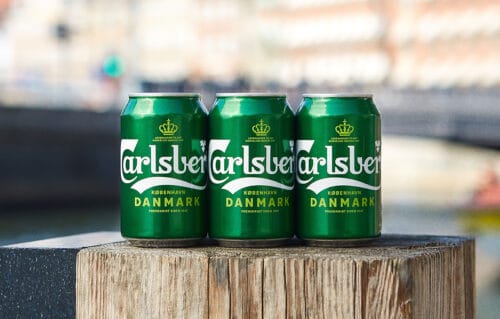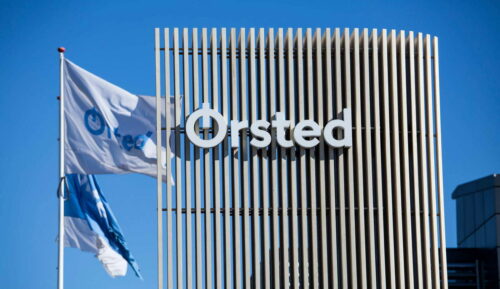How to Use Audio Branding to Strengthen Your Market Position
September 28, 2022
McDonald’s is without a doubt the king of audio logos. The company’s famous “I’m Lovin’ It” is the most recognizable audio brand worldwide, followed by other heavyweights like Disney, Intel, and Coca-Cola.
These companies represent the old, traditional approach to audio branding. They created short sound cues to be inserted in their TV and radio ads, back when audio branding was still very much a niche market. This technique has proved to be extremely effective in the past, but the industry has changed since then.
Technology has moved forward and so has audio branding. Today, a sonic “jingle” like the fizz from a newly opened coke bottle isn’t going to cut it. New methods and practices require new approaches when it comes to sonic branding.
Modern approaches to win sonic market shares
A 2018 study conducted by the University of South Florida showed how music can affect consumer choices. When the owner of a café in Stockholm switched between playing loud, ambient music, and softer, more quiet tunes, it had a clear impact on what the customers ordered from the menu. During periods where the louder music dominated the soundtrack, people generally ordered burgers and other types of more unhealthy food. During periods with softer background music, the customers preferred salads instead.
Of course, the results of this study were hardly surprising, since McDonald’s and other fast-food restaurants have employed tactics for decades to spike sales. However, another study indicates that sound can have a much bigger impact on consumers than simply getting us to crave greasy fast-food. Another study suggests that sound can affect how we perceive and enjoy food. The study shows how loud background noise can actually hurt our food experience.
The results of these two studies suggest that there is a sweet spot when it comes to audio usage in food venues. The trick is to find a balance between driving sales higher without compromising customers’ overall enjoyment of the food. Even a catchy jingle won’t make much of an impact if the overall customer experience is of low quality.
Perhaps airlines have the solution in hand. Their dilemma comes from noise pollution from jet engines mixed with their passengers’ physical reaction at high altitudes. The result is sensory overload and customers discomfort. Emirates have sought to remedy this problem for their passengers in first class to make the flight experience more pleasurable. In collaboration with Bowers & Wilkins the airline equipped their passengers with noise-canceling headphones.
The fast-food industry might take inspiration from this and attempt a similar approach. Big brands like KFC and Wendy’s are already working on branding themselves through music, and for these giants, a soundscape to heighten the food enjoyment could be the natural next step.
Another way to benefit from audio branding could be by adding sound to digital platform navigation. In the financial sector, brands like Mastercard and Visa are already exploring how sound design can add a human touch to money transactions, normally seen as something impersonal and cold. So far, Visa’s research has shown that 83% of consumers felt a more positive connection with the brand after being exposed to Visa’s signature sound at the point of purchase.
How did Visa achieve this? By designing the sound so customers associated it with speed, trust, security, and innovation, which are Visa’s core values. Mastercard on the other hand is already fully engaged in creating their own audio brand identity. Recently, the brand has also tried to expand their audio branding to include the rest of our senses.
All these new branding efforts paint a larger picture. Audio branding has now taken center stage in customer experience. It is no longer confined to a dust-filled corner of companies’ marketing strategy, and sonic branding is no longer just catchy audio logos and theme songs. Today, the approach to audio branding begins by asking how and where the brand can connect with its audience.
The potential of sound in consumer engagement
The strength of audio marketing lies in its subtlety. While visual advertising broadcasts through phones, billboards, and print ads can feel highly intrusive in our daily lives, audio can be consumed separately. Sound is often associated with relaxing activities such as listening to music in the car, while cooking or cleaning, or simply while relaxing at home. IFPI’s 2019 report on consumers’ music listening demonstrates that music is a leisurely activity that is ever more popular across age groups.
Audio content requires less effort to follow than visual content, which explains why podcasts and other audio-first mediums are so popular. Zuleika Burnett, the Executive Director of Havas Life Medicom, explains it this way in Accenture’s latest report on consumer experience: “People will listen to 40 minutes of content on average; that’s a long time for a brand to engage with an audience”.
Future possibilities for sonic branding
When looking at the future of audio branding, the smart speaker seems to promise new possibilities. According to the Smart Audio Report from spring 2020, 69% of smart speaker users feel that they don’t know enough about their smart speaker’s features. Users typically rely on family and friends when they need help to set up their device, rather than seeking help from companies. 45% of respondents turned to the people close to them when they needed to learn about their new smart speakers, while only 18% of respondents turned to the companies who were advertising smart speaker support.
This leaves an opportunity for brands to connect with consumers by offering training and technical support. Rather than simply use the sonic medium to bombard their audience with flashy ads that don’t allow real interaction, this can help brands reach consumers more profoundly. With the help of machine learning, smart speakers can strengthen the bond between brands and their audiences.
Imagine for instance that eating healthy became easier thanks to an AI-generated shopping list. That online shopping could be taken care of simply through voice commands. Or that brushing your teeth could become a fun activity by listening to bedtime stories from your toothpaste brand at the same time. The possibilities are endless.
The marketing industry is already aware that brands need to deliver social value. Brands must nowadays entertain as well as educate in a more honest, unified, and non-intrusive way. The medium of sound is perfect for this strategy, since audio can humanize trivial and invisible aspects of brand products or service without overwhelming our senses and attention span.
As a brand looking to develop your own sound, you have plenty of options. It is possible to start from both ends of the customer journey, whether you want to start with something simple or dive into more complex sound design from the beginning. No matter whether you choose a music type for consumers to associate with your brand, or you create a soundscape to enhance the customer experience, you need to establish a strategic framework for your audio branding. The key is to develop a consistent and comprehensive audio branding strategy that can help define your brand. By diving into audio branding, you will add social value to your brand while gaining market leadership in your field.



